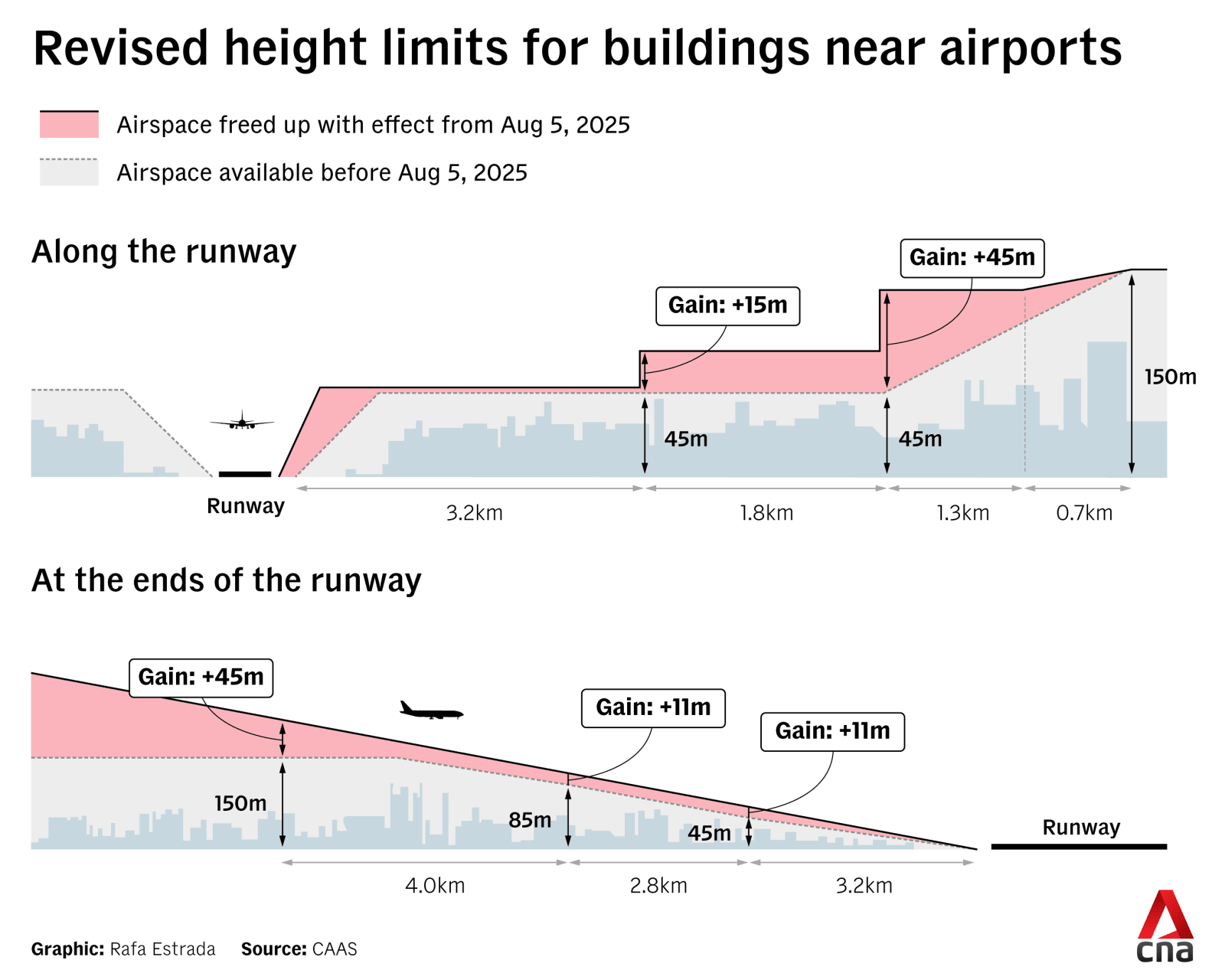Singapore raises building height limits near airports following review
Buildings near airports in Singapore can now be built taller - potentially by up to 15 storeys for residential developments, and up to nine storeys for industrial or commercial buildings, said CAAS.

The exterior of Singapore's Changi Airport. (Photo: iStock)

This audio is generated by an AI tool.
SINGAPORE: Buildings near airports in Singapore can now be built taller - potentially by up to 15 storeys for residential developments, and up to nine storeys for industrial or commercial buildings - following a review of height restrictions.
The Civil Aviation Authority of Singapore (CAAS) said on Tuesday (Aug 5) that it has updated its rules in line with international guidelines on how tall buildings and structures can be near airports.
In May, then-Minister for Transport Chee Hong Tat said that CAAS had been working with the International Civil Aviation Organization (ICAO) to explore freeing up airspace around airports for developments. The authority noted that this was the first time ICAO had reviewed its height restriction standards since the 1950s.
"The revised regulations will enable aircraft operations in Singapore to be safeguarded with more precision according to the specific type of operations at each airport and free up more airspace surrounding airports in Singapore for development," CAAS said on Tuesday.
"Specifically, this will present opportunities for building height limits and development intensity to be raised in some parts of Singapore."
CAAS added that government agencies are still studying how tall and dense future developments near airports can be, taking into account infrastructure capacity and the need to preserve a quality urban living environment.

The revised limits stem from a review conducted by an international task force, established in 2015 and chaired by CAAS since 2017.
In its review, the task force took a data-driven approach, considering factors such as advancements in aircraft electronic systems and air navigation technology, with input from industry stakeholders and technical panels.
Said CAAS director-general Han Kok Juan: "Singapore is honoured to contribute to this major review, including through our chairmanship of the international taskforce.
"It will support developments and benefit many countries around the world, including for land-scarce Singapore. This effort underscores the value of collaboration through multilateral institutions and the ability of Singapore and Singaporeans to make meaningful contributions."
CAAS said that one of the key updates is the introduction of surface classifications around airport runways: Obstacle-Free Surfaces (OFS) and Obstacle Evaluation Surfaces (OES).
OFS are surfaces near the runway that are crucial for safe landings, while OES are surfaces designed to safeguard specific flight paths and procedures used at the runway.
The previous model was a "one-size-fits-all" approach that often required more airspace to be reserved for aviation operations.
This new classification, however, allows airports to apply rules that match their specific flight operations, noted CAAS.
Mr Chee said in May that the change will support further land intensification, which he described as important because of the scarcity of land in Singapore.
"This will help to open up opportunities for businesses and have the potential to increase our overall housing supply."













